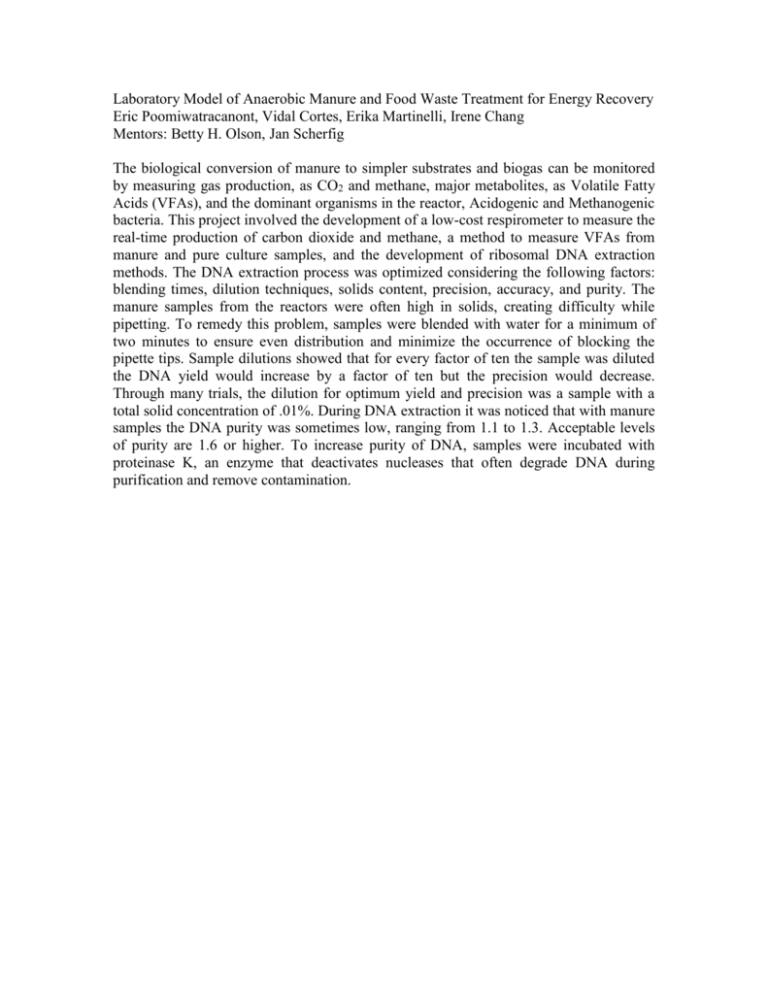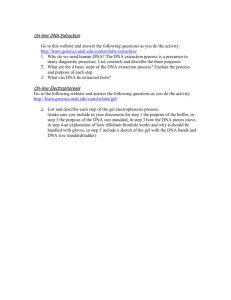Laboratory Model of Anaerobic Manure and Food Waste Treatment
advertisement

Laboratory Model of Anaerobic Manure and Food Waste Treatment for Energy Recovery Eric Poomiwatracanont, Vidal Cortes, Erika Martinelli, Irene Chang Mentors: Betty H. Olson, Jan Scherfig The biological conversion of manure to simpler substrates and biogas can be monitored by measuring gas production, as CO2 and methane, major metabolites, as Volatile Fatty Acids (VFAs), and the dominant organisms in the reactor, Acidogenic and Methanogenic bacteria. This project involved the development of a low-cost respirometer to measure the real-time production of carbon dioxide and methane, a method to measure VFAs from manure and pure culture samples, and the development of ribosomal DNA extraction methods. The DNA extraction process was optimized considering the following factors: blending times, dilution techniques, solids content, precision, accuracy, and purity. The manure samples from the reactors were often high in solids, creating difficulty while pipetting. To remedy this problem, samples were blended with water for a minimum of two minutes to ensure even distribution and minimize the occurrence of blocking the pipette tips. Sample dilutions showed that for every factor of ten the sample was diluted the DNA yield would increase by a factor of ten but the precision would decrease. Through many trials, the dilution for optimum yield and precision was a sample with a total solid concentration of .01%. During DNA extraction it was noticed that with manure samples the DNA purity was sometimes low, ranging from 1.1 to 1.3. Acceptable levels of purity are 1.6 or higher. To increase purity of DNA, samples were incubated with proteinase K, an enzyme that deactivates nucleases that often degrade DNA during purification and remove contamination.








